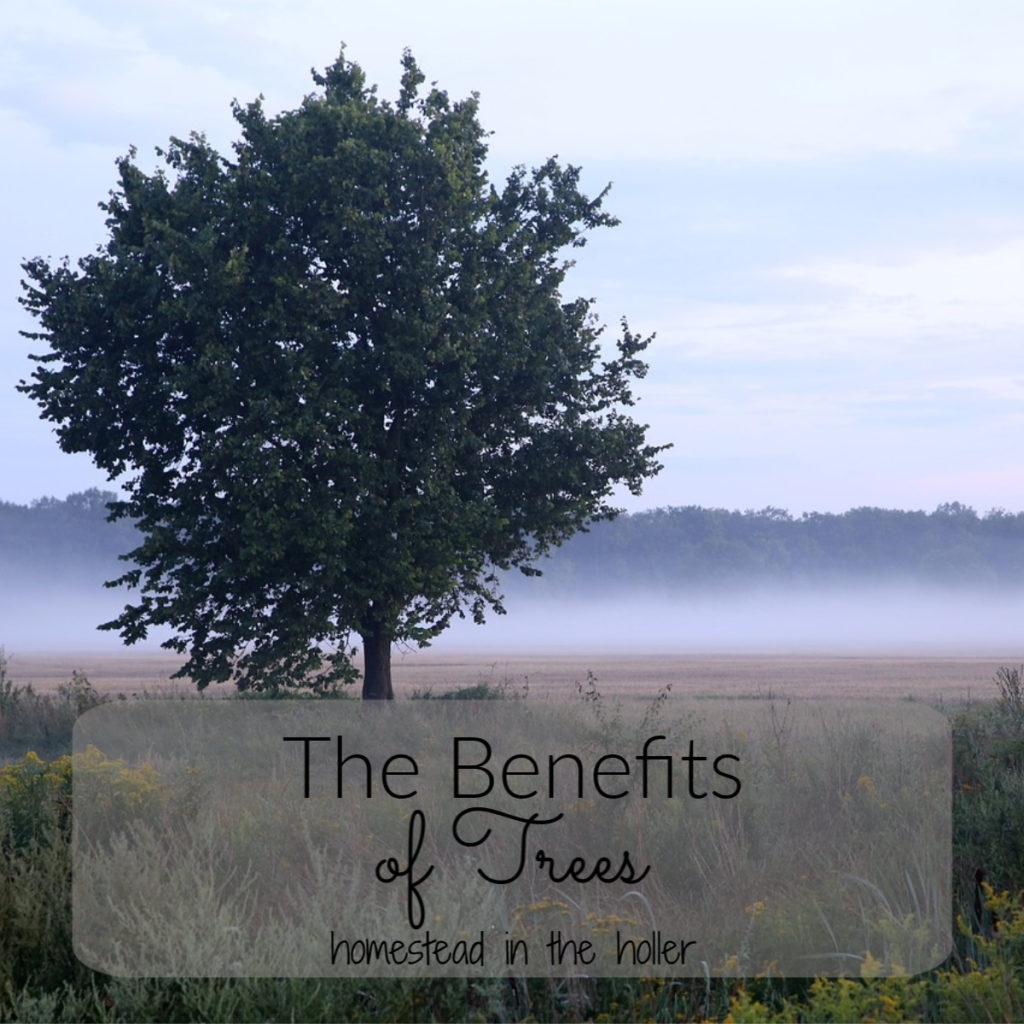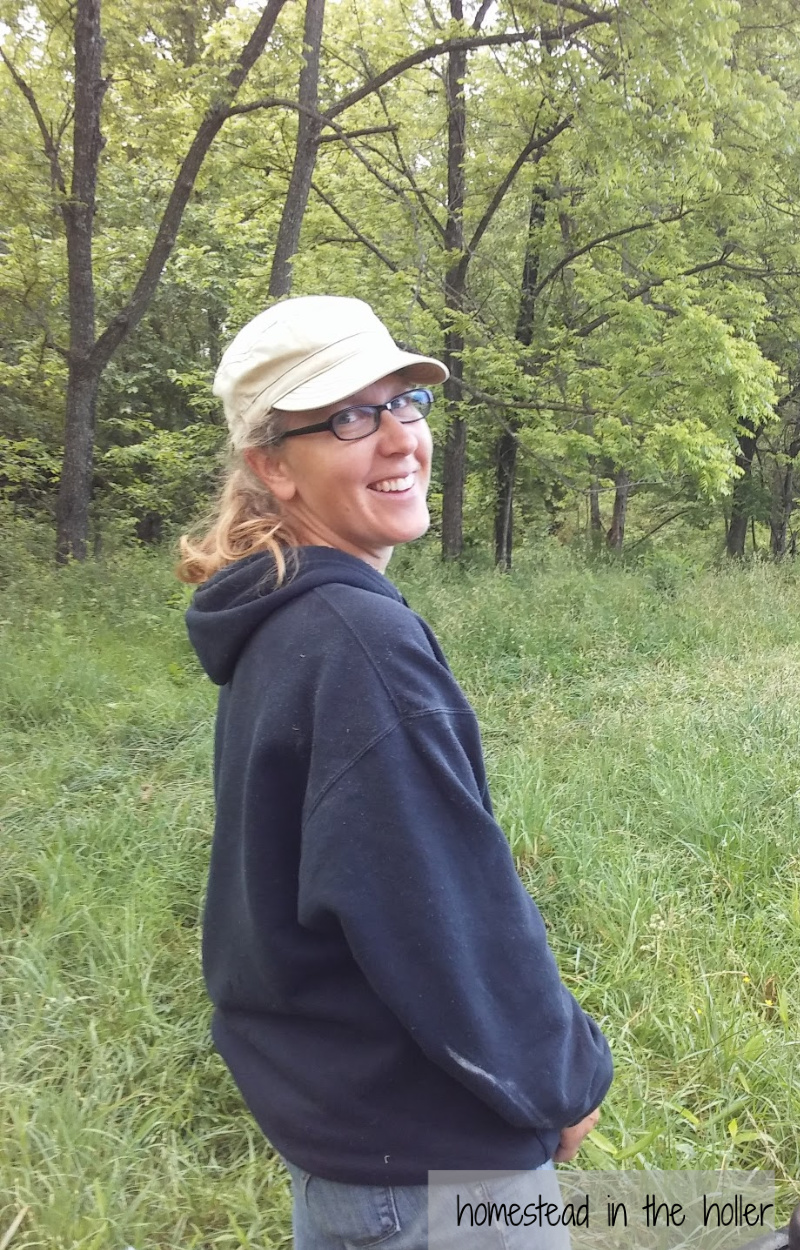 Homestead in the Holler is a participant in the Amazon Services LLC Associates Program, an affiliate advertising program designed to provide a means for sites to earn advertising fees by advertising and linking to amazon.com.
Homestead in the Holler is a participant in the Amazon Services LLC Associates Program, an affiliate advertising program designed to provide a means for sites to earn advertising fees by advertising and linking to amazon.com.
Have you ever not appreciated something until you didn’t have it? I have lived in wooded areas most of my life, but never really thought about trees and the benefit of trees until we moved to Colorado. Sure we lived in a Ponderosa Pine forest, but it was a dry climate and not much else grew. The ranches there were dry with a rare tree in the pastures. It wasn’t until we moved to southern Missouri and saw the variety of trees that grow here that I started to think about all the benefits wooded areas on your homestead or farm brings.
Trees are beautiful and majestic, but their benefits are often overlooked. While it is important to keep the woods from taking over pastures, trees are an asset to your farm or homestead.
Here are Some reasons why you should have trees on your homestead.
Oxygen
We all know this one, but it’s an important one that bears repeating. Trees use the carbon dioxide in the air and in return give us oxygen. The removal of trees on our planet is one of the reasons that climate change is speeding up. There aren’t enough trees to help convert carbon dioxide into oxygen! Trees also clean the air of pollutants by filtering the air that flows through them. Who can argue with clean air?
Prevent erosion
Anytime you clear a hillside of trees, you risk erosion from wind and rain. Tree roots are excellent at holding the soil, providing an anchor for the soil around them. Trees also improve the soil around them by providing their own mulch. The mulch enables bacteria and fungus growth, which improves the soil tilth. Good soil tilth, or condition of the soil, helps prevent erosion by being able to absorb more water and causing less run off.
Nitrogen fixers
There are trees and plants that are able to draw out nitrogen from the air. They then store the nitrogen in nodules on their roots, called nitrogen nodules. When these plants and trees die, they release the nitrogen that they have been storing so that it is available to other plants and trees around them. Nitrogen fixing plants are legumes, such as beans and peas. Some shrubs and trees include Siberian Pea Shrub, Broom Shrubs, Locust Trees, Kentucky Coffee Tree and Russian Olive. Locust trees, such as Honey Locust and Black Locust have some controversy around whether or not they are nitrogen fixers. Current research shows that they are. Here is a full list of nitrogen fixing trees and shrubs.
Nitrogen fixing trees are fast growing pioneer trees, meaning they usually are the first trees to appear in a cleared area. Nature uses pioneer trees to reclaim the cleared area and turn it back into woods. These trees will also start to grow again after they have been cut down. Both can be used to our advantage! Dispersing these trees among fruit trees is an excellent use for nitrogen fixers. There is a bit of controversy on whether or not you need to cut the nitrogen fixing trees down in order to get a nitrogen boost for the fruit trees. Some say you do, others say you don’t and have fruit trees clearly doing well with the nitrogen fixers growing beside them. Either way, it’s a good nitrogen boost. If the nitrogen fixer does happen to get in the way of the fruit tree, you can simply cut it down.
Water
Trees have a large root system. If you could look underground, the root system would look as big as the tree above ground. The purpose for such a large root system and large tap root is to find water and bring it back to the tree. Trees are great at sharing and often bring up more water than they need. Plants that are planted near the tree benefit from those long roots looking for water. It always amazes me to see the green grass ring around a large tree, especially during an especially hot and dry summer.
Mulch
Trees provide themselves with their own naturally occurring mulch. Fallen leaves are an excellent mulch and improves the health of the tree. If the fallen leaves are left on the ground, they will rot, which will encourage soil life to move there. A good covering of leaves also help keep the weeds down and prevents the soil from drying out.
Fodder/Forage
Planting trees on the other side of the fence by pastures (to prevent the animals from killing the tree) is a good way to provide fodder and shelter for livestock. Sheep and goats love eating the leaves off of trees, cattle enjoy some trees as well. That’s because the leaves of trees have a higher protein content than that of herbaceous plants. In fact, the protein content can be higher than oats in some trees! Trees also have long taproots, which help bring up a lot of minerals for the foraging animal. Pigs and chickens can enjoy fodder trees as well. Pigs love acorns, nuts and fallen fruit. Chickens also love fallen fruit. Fodder trees can be used as a seasonal feed supplement that the livestock will love.
Shade
Who doesn’t love a great shade tree? Shade trees are beneficial for keeping your house cool in the summer and livestock appreciate relief from the sun as well. Shade also provides micro-climates in the garden and a place to plant shade loving plants for variety.
Don’t underestimate transpiration! Transpiration helps cool the air around trees, which is part of why it’s so delightful to sit in the shade by a tree in the summer. Add a hammock and a glass of lemonade and you have it made!
Fruit
This is a major benefit of trees, getting fruit! Fruit trees come in several different sizes, dwarf, semi-dwarf and standard. This makes it easy to place them just about anywhere. In a few years after planting, you can be enjoying apples, pears, cherries…..whatever tree fruit that suits your fancy. A tree that keeps on giving back, what’s not to love?
Windbreak
Some areas of the country endure the wind blowing all the time. Trees make an excellent wind break to give some relief from the wind. Livestock, large and small, appreciate shelter from the wind. A layered windbreak will help direct the wind up and over the house, farm buildings, animals, garden, whatever you’re trying to protect. Here is an example of a good windbreak and some tree suggestions.
Wildlife and Beauty
Trees are beautiful! Flowering trees in the spring, fully leafed out trees in summer and autumn golds and oranges can’t be beat. Trees also bring birds, squirrels and other wildlife. In a rural setting, the trees may provide shelter for numerous wild animals, such as deer and raccoon. In the city, trees will invite birds into your yard. Encourage the birds with bird feeder in a tree, and you can have the best bird watching site right from your kitchen window.
Entertainment
Kids love tree forts, tire swings and climbing trees. The bigger the tree, the more fun those activities are! Some animals love trees for the entertainment as well. When given the chance, our goats will climb up into the trees. Sometimes to reach a tasty bunch of leaves, sometimes just because they can. Either way, it’s fun to watch!
Are you ready to plant some trees?

Hi! Around here I wear many hats. Homesteader, farmer, homemaker, homeschool mom, gardener and builder. We strive for a simple, self-sufficient life on our little piece of paradise. Read more


4 responses to “Reasons For Trees”